|
|
|
Sort Order |
|
|
|
Items / Page
|
|
|
|
|
|
|
| Srl | Item |
| 1 |
ID:
133222
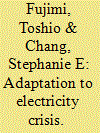

|
|
|
|
|
| Publication |
2014.
|
| Summary/Abstract |
Electricity crises can spur improvements in electricity conservation that would be unachievable under normal circumstances. This paper investigates how businesses adapted to electricity shortages following the March 11, 2011, Great East Japan earthquake, tsunami, and nuclear disaster. In summer 2011, mandatory and voluntary electricity conservation measures affected nearly all of Japan, and peak hour electricity consumption was reduced by a remarkable 18% in the Tokyo region. Using statistical data from 14 business surveys conducted in 2011 and 2012, this paper identifies patterns with regard to type of adaptation, conservation requirements, economic sector, and timeframe. Results indicate that behavioral adaptations (e.g., reduction of illumination or air conditioning) were much more common than schedule adaptations (e.g., shifting production times) or hardware adaptations (e.g., installing energy-efficient devices or private generators). Adaptation patterns were very similar between mandatory and voluntary conservation areas. Manufacturing companies were more likely to implement schedule adaptations than other companies. Certain types of adaptations persisted into 2012, especially reduction of illumination and air conditioning, and installation of energy-efficient devices. These insights may be useful for informing electricity conservation policies in non-crisis contexts.
|
|
|
|
|
|
|
|
|
|
|
|
|
|
|
|
| 2 |
ID:
069325
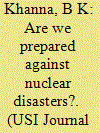

|
|
|
| 3 |
ID:
108496
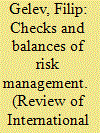

|
|
|
|
|
| Publication |
2011.
|
| Summary/Abstract |
After the terrorist attacks of 11 September 2001 Ulrich Beck placed terrorism alongside other potentially catastrophic events such as global warming, nuclear disaster, and influenza as one of the 'dimensions' of risk society. In risk society, executive governments take 'precautionary measures' and parliaments pass 'preventative laws' allowing them to accumulate information, detain terrorism suspects, freeze funds and prohibit various groups, in order to stop catastrophic risks from eventuating. International Relations and legal scholars have used risk society theory or the ideas of Michel Foucault to criticise such excesses of the executive and parliamentary branches of government. Most studies either ignore the judiciary or argue that it stands in opposition to the other branches of governments, that it imposes checks and balances in order to uphold the rule of law and protect individual rights. The article argues that this view is naïve and does not acknowledge a long history of judicial deference to the will of the executive and parliament. Through an analysis of case law from Australia and Canada the article explores parallels between early 21st century judicial reasoning and previous periods of crisis, including the Cold War, while identifying some new 'precautionary approach' aspects. The judiciary defers to the executive, asserts that the executive is more accountable than it, and seeks to avoid responsibility for engaging in this 'precautionary justice'. Furthermore, seized by the same fear of terrorism as executive governments, the judiciary shows an ability to adapt existing legal concepts to the exigencies of risk society. The article concludes that as the memory of the 9/11 attacks fades some of the most draconian preventative measures may be scaled back but the judiciary cannot be relied on to keep the executive or parliament in check.
|
|
|
|
|
|
|
|
|
|
|
|
|
|
|
|
| 4 |
ID:
108878
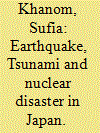

|
|
|
|
|
| Publication |
2011.
|
| Summary/Abstract |
This paper attempts to assess the impacts of the devastating natural disaster - earthquake followed by tsunami, that shook Japan on 11 March 2011, from socio-economic and development point of view. The intensity of the disaster was reflected through a destructive earthquake measuring 8.9 on Richter scale along with a tsunami at a speed of 500 miles/hour. Though, Japan is technologically and economically developed, it described the disaster as the worst crisis in the 65 years of its history since the end of World War II. Huge humanitarian crisis and massive disruption of industrial supply chains negatively affected the economic growth of Japan and put enormous stress on the psyche of Japanese people. The plight of the people had been compounded further by the threat of radiation exposure from the damaged reactors of nuclear power plants at Fukushima. The mishap at nuclear power plants at Fukushima posed some serious questions to the world: how safe nuclear power plants really are? Should the world look for a safer alternative to power problems? The disaster in Japan and its consequences have some serious impacts on Bangladesh from a development perspective. Japan has long been the principal donor and biggest development partner of Bangladesh. But the ongoing crisis in Japan may pose a threat or create some degree of uncertainty to the long term development planning of Bangladesh. Besides, the catastrophic experience of Japan has made Bangladesh rethink about its readiness to encounter similar disasters. As a climate induced vulnerable country, Bangladesh should strengthen its disaster management system by ensuring early warning system, as well as improving rescuing and relief management mechanism to combat such natural calamities.
|
|
|
|
|
|
|
|
|
|
|
|
|
|
|
|
| 5 |
ID:
111761
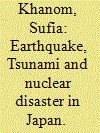

|
|
|
| 6 |
ID:
030210
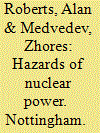

|
|
|
|
|
| Publication |
Nottingham, Spokesman, 1977.
|
| Description |
73p.
|
| Standard Number |
0851242111
|
|
|
|
|
|
|
|
|
|
|
|
Copies: C:1/I:0,R:0,Q:0
Circulation
| Accession# | Call# | Current Location | Status | Policy | Location |
| 018001 | 333.7924/ROB 018001 | Main | On Shelf | General | |
|
|
|
|
| 7 |
ID:
124595
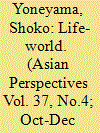

|
|
|
|
|
| Publication |
2013.
|
| Summary/Abstract |
The human and ecological disasters of Minamata and Fukushima highlight Japan's need to plan for a sustainable future. Ogata Masato, a Minamata fisherman, through his philosophy of "life-world" suggests that this quest for a sustainable future requires a change in the epistemology of social science. His philosophy offers a postmodern version of Japan's heritage of animism, where humans are connected with all living beings, including the souls of the living and the dead, as well as animate and inanimate entities in nature. His philosophy thus presents an alternative framework for a new modernity.
|
|
|
|
|
|
|
|
|
|
|
|
|
|
|
|
| 8 |
ID:
113797
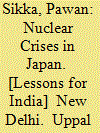

|
|
|
|
|
| Publication |
New Delhi, Uppal Publishing House, 2012.
|
| Description |
xv, 274p.Hbk
|
| Standard Number |
9788176580687
|
|
|
|
|
|
|
|
|
|
|
|
Copies: C:1/I:0,R:0,Q:0
Circulation
| Accession# | Call# | Current Location | Status | Policy | Location |
| 056663 | 363.349/SIK 056663 | Main | On Shelf | General | |
|
|
|
|
| 9 |
ID:
146642
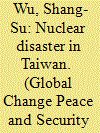

|
|
|
|
|
| Summary/Abstract |
Despite the low probability of such an event, a serious nuclear power plant incident in northern Taiwan would create a multidimensional security challenge, in terms of both traditional and non-traditional security when factors such as high population density and geopolitical significance of the island are considered. Dealing with nuclear contamination, including evacuation, medical treatment and resettlement, would severely affect human, environmental and other categories of non-traditional security. Taiwan's insufficient level of preparation would make external disaster relief crucial. Since military units are likely to be deployed by assisting countries to respond to a nuclear event, consequent Sino-US interactions in humanitarian aid and disaster relief (HADR) could be either cooperative or competitive.
|
|
|
|
|
|
|
|
|
|
|
|
|
|
|
|
| 10 |
ID:
126087


|
|
|
|
|
| Publication |
2012.
|
| Summary/Abstract |
Lesson learned from large scale nuclear disasters have historically inspired changes to emergency preparedness. The 1979 nuclear accident at three mile Island informed the formation of the federal emergency management Agency (FEMA), fundamentally changing the federal government`s approach to preparedness and response and augmenting US nuclear emergency preparedness. The 1986 accident at the Chernobyl nuclear power plant in the former Soviet Union prompted an era of international cooperation in nuclear safety and radiological protection that continues to this day. Likewise, the 2011 meltdown at the Fukushima Daiichi nuclear power plant in Japan after the Great East Japan Earthquake offers many lessons for US radiological emergency preparedness.
|
|
|
|
|
|
|
|
|
|
|
|
|
|
|
|
| 11 |
ID:
132904


|
|
|
|
|
| Publication |
2014.
|
| Summary/Abstract |
The trifecta of disasters in japan that unfolded on 1 1 March 201 1 strains credibility: a 9.0-level earthquake (the largest ever recorded in Japan), a thousand- year tsunami that devastated a 300-kilometer stretch of coastline in northeastern Japan, and three nuclear reactors in meltdown, exposing signi?cant portions of japan to potentially dangerous levels of radiation. In the aftermath of these unprecedented disasters, the meaning and signi?cance of this disaster have evolved. As Japanese government authorities and the general public alike have come to un(ierstand the nuclear disaster in more nuanced terms, retrospective evaluations now cast this crisis in its historical context and are coming to calibrate the level of significance in more consistent terms than was the case in the immediate aftermath of the disaster. This article analyzes how media and government authorities assessed the Liu Kushima nuclear disaster from its onset and considers how cultural frames of reference came into play, leading to selective perceptions about the nature of the accident and its presumed effects. The author discusses the nuclear disaster as a "moral panic," as the media constructed a narrative arch that ampli?ed perceptions of risk in often melodramatic terms, filtering information that shaped public perception and influenced the action of decision-making elites. In addition to discussing how the nuclear disaster affected Japanese domestic politics, the article addresses the impact of the nuclear disaster on international alliances and its implications for the nuclear industry.
|
|
|
|
|
|
|
|
|
|
|
|
|
|
|
|
|
|
|
|
|